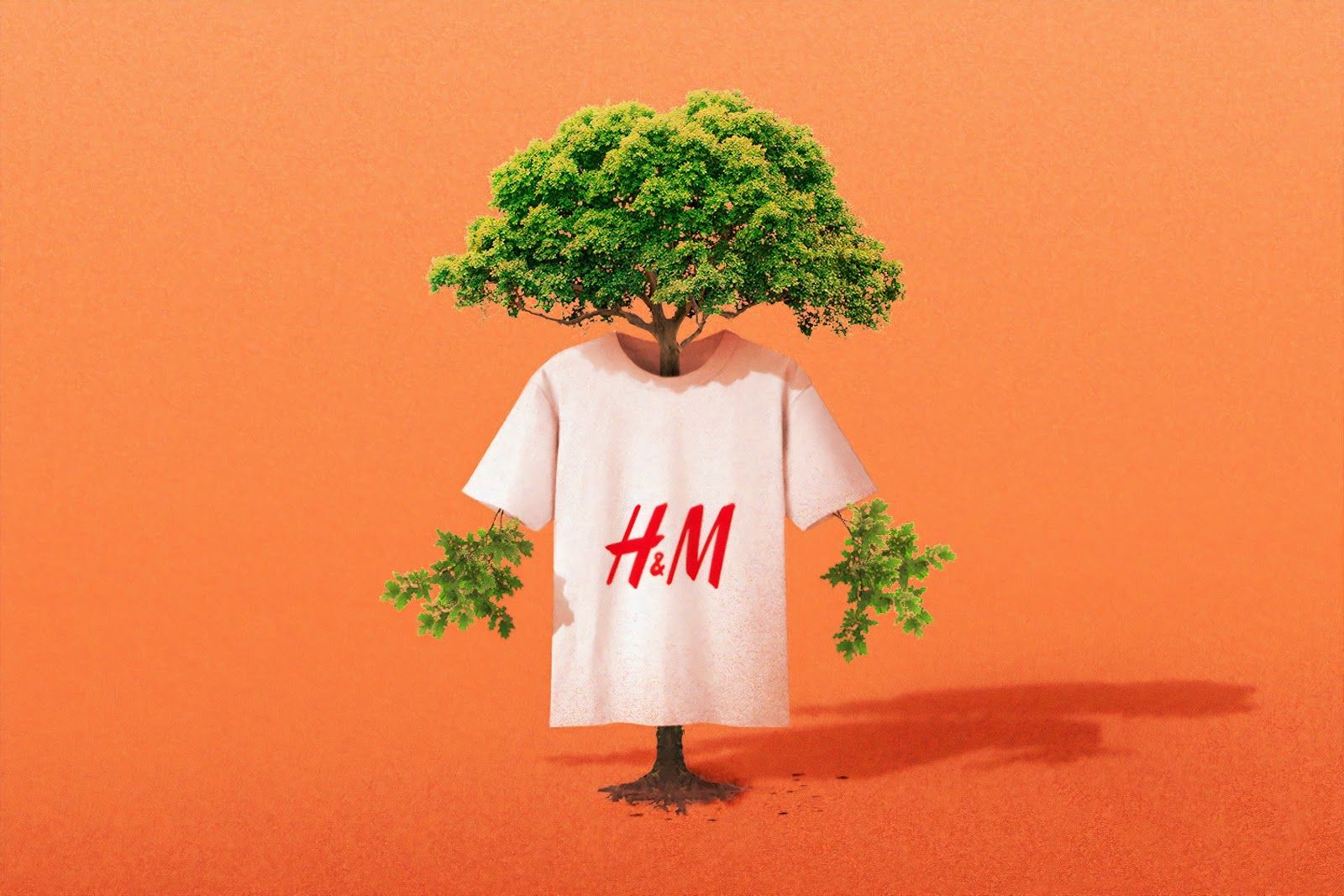Contents
Fast fashion has taken the world by storm. With a promise of providing the trendiest styles by replicating the designs of top fashion brands in a quick and affordable manner, it seems too good to be true. Oftentimes, these clothes are produced quickly with short-lasting fabrics, hence why it’s called “fast” fashion. However, the dark reality is that fast fashion has dire impacts on the environment and workers’ health, making it imperative for fashion designers to adopt ethical, eco-friendly methods of production.
How Fast Fashion Contributes to the Climate Crisis
Production and Consumerism of Low-Quality Clothing
Did you know that the average UK wardrobe holds around 152 apparel items, with the majority of the clothes only ever being worn once or never? The truth is that we only wear about 10 to 15 of our owned clothes items in rotation. In the US, each American sends nearly 80 pounds of clothing to landfills each year – 85% of the clothing that the market purchases. So, why do fashion customers invest in more items knowing that they won’t wear a large majority of them?
Cheap prices, and the concept of getting more for less has helped stores like Zara and H&M thrive. Instead of buying a luxury, Italian-made cashmere sweater, shoppers think, “Why not buy a knock off, cheaply-made version of it for less than half the price?”
In years past, fashion shoppers have loved the feeling of buying on trend clothing without paying full price. However, while the clothes may seem like an immediate bargain to those shoppers in the moment, that doesn’t account for the dangerous price paid by the environment and the resulting risks to the workers who manufacture these fast fashions.
The Myth of Sustainable Fast Fashion
Zara produces its nearly 840 million garments, for 6,000 stores annually, and they do so at sub-poverty wages for their workers in countries like Morocco, Bolivia, and Bangladesh.
However, Zara also claims that they recognize the existential climate crisis and say they are taking actions to make their brand more sustainable. In 2020, they claim that they reduced water and energy consumption in their clothes production and installed donation bins for old clothes in all of their stores. But does this actually benefit the environment?
If you love brands like Zara, I’m sorry – you’re not going to like this.
Zara is making an attempt to “greenwash” their customers by making them believe that the company is more environmentally conscious than it actually is. They claim that they have reduced water and energy consumption, but the truth is that when you venture further into their sustainability report, you see in the fine print that this change only applies to their clothing’s TAGS – not to the apparel itself.
Zara also claims that as part of their eco-initiative, they’ve installed clothes donation bins at retail locations. While it may seem like a great initiative to ask customers to donate old clothes rather than throw them away, it really is just as harmful. Before you go Marie Kondo your closet, know that only about 40% of the clothes you donate actually get donated. This means that more than half of the clothes you donate do not go to benefit those in need and get added to the landfill instead.
Harsh Chemicals in Clothing Manufacturing Put Health at Risk
“From the growth of water-intensive cotton, to the release of untreated dyes into local water sources, to worker’s low wages and poor working conditions, the environmental and social costs involved in textile manufacturing are widespread,” said Christina Ekenga, an assistant professor at Washington University in St. Louis and co-author of the paper “The Global Environmental Injustice of Fast Fashion.”
Workers and those who live near textile manufacturing sites for fast fashion companies deal with a plethora of environmental health hazards due to tons of textile waste in water sources and landfills. Fast fashion companies often source cheaper textiles like polyester and other synthetic fabrics. Many of these produced fabrics hide chemicals like silicone waxes, softeners, heavy metals, ammonia, petroleum scours, and formaldehyde. The most popular textile processing chemicals like formaldehyde and PFAS carry the highest risks.
The Centers for Disease Control (CDC) considers textile laborers as having a “high level exposure” to risks for kidney and testicular cancers, liver damage, and developmental issues. These exposure risks can happen a number of ways, from touch in factory environments or by ingesting contaminated food and drinking water from textile factory polluted rivers, a frequent occurrence in third-world countries. While consumers experience a risk by wearing and washing these items at home, laborers working in manufacturing factories are at deadly risk from daily exposure to these chemicals. While the minor effects of these chemicals include skin irritation from wearing or manufacturing, the more harmful health effects include cancer and developmental issues in children.
Additionally, many fast fashion producing nations don’t have strong labor laws, which unscrupulous companies use to their advantage. The most popular nations where fast fashion brands choose to manufacture include Bangladesh and Cuba, two countries that allow forced child labor and labor in dangerous conditions, for microscopic wages, with long hours.
Along with child labor, many of these third-world manufacturing countries, especially in Asia, have a nearly 80% female cut and sew labor force. Fast fashion manufacturers take advantage of the patriarchal nature of society in these locations and compensate female workers significantly less than the already low wages and require them to work longer overtime hours. Even as recently as 2020, successful fashion brand Boohoo was found to be paying their workers as little as $3.50 per day. With the majority of these fast fashion brands being based in socially developed countries like the United States and the United Kingdom, their outsourcing of much of their cut and sew labor conversely impacts the social development and gender equality in developing nations.
What is Eco Clothing Manufacturing?
Eco-friendly manufacturing is a process of manufacturing that protects the planet by conserving natural resources. While it may seem complicated for fashion brands and designers to make this transition for their product design and manufacturing, it’s actually easier done than said.
Eco-Friendly Materials & Fabrics
The development of more environment-friendly materials have aided this transition for brands by reducing toxic waste while using less energy, harsh chemicals, water, and oil. Brands like Nike have proven that this change can be as simple as, for example, defaulting to organic cotton and/or recycling cotton fabric waste back into fleece for other garments.
Let’s take a look at some of the top designer-favorite sustainable materials and fabrics in the market right now:
- Organic cotton, one of the sustainable fabrics currently used by Nike, is one that we love. Made from natural fibers and not requiring the use of any pesticides or chemicals makes it socially conscious to manufacture, as well as comfortable for consumers who prefer soft, breathable, biodegradable fabrics to wear.
- Linen, is a thin and lightweight sustainable fabric that is perfect for breathable dresses and tops. Also being biodegradable and not requiring the use of pesticides and chemicals, linen is a top pick for sustainable brands and consumers.
- Silk is a luxurious and smooth fabric used by sustainable brands like Everlane. While it can be expensive, it’s made of natural fibers and requires less water than cotton. Being biodegradable and soft, it’s a popular and sustainable choice for all.
Some fabrics that we recommend to avoid if you’re trying to go sustainable with your materials include:
- Nylon: While it requires low amounts of water for production and is affordable, this fabric is sourced from oil and processed with toxic chemicals, harming the health of laborers and the environment.
- Polyester: While this fabric also requires low amounts of water and is affordable too, it is also produced from oil and toxic chemicals. Not only this, but polyester is non-biodegradable and requires a large amount of energy during production.
- Rayon: While it is biodegradable, affordable, and uses less water than cotton, it is processed with toxic chemicals that puts laborers and ecosystems at risk.
Nylon, polyester, and rayon fabrics also release millions of microfibers when washed in washing machines. These microfibers enter water systems used by all humans and into oceans, harming sea life and human health.

Opting for Ethical Manufacturing
We know that choosing a manufacturer is a big decision, and, to help, we recommend choosing one that manufactures in ethical countries where laborers are treated well and where sustainable, high-end fabrics can be sourced and used at your request.
While the production process differs for all companies, usually all apparel manufacturing processes involve product design, fabric selection, patternmaking, grading, marking, spreading, cutting, bundling, sewing, pressing, finishing and detailing, and dying and washing.
We recommend MakersValley for ethical clothes manufacturing. MakersValley caters to high-end designers and brands that produce garments and apparel in Italy.
One defining aspect of MakersValley is that they allow designers and brands to personally learn from and be involved in every step of the manufacturing process. Bianca Bucciarelli, one of the many designers they have worked with, recalls being involved in hand selecting the fabric and approving the patterns and samples.
Promising layered quality assurance and binding private label protections, this transparent and convenient option also requires manufacturers to sign brand design protections and double check production apparel quality in house to ensure outgoing products are the best that they can be. They also allow designers to use their pick of eco-friendly fabrics and materials when requested.
Benefits of Ethical and Ecofriendly Clothing Manufacturing
Now that we’ve learned how easy it is to go eco-friendly and ethical in your production pipeline, let’s look at some of the biggest benefits of making this transition for your brand.
Customer Satisfaction
Going eco-friendly with your clothing materials helps your products last longer. With the rise of climate strikes and environmental advocacy, consumers are looking for ways to purchase high-quality apparel. By using non-synthetic fabrics and sustainable fabrics, you are also more likely to stand out in the eyes of consumers.
Ethical Labor
The transition to ethical manufacturers not only means better quality apparel, but also better working conditions for factory laborers. Customers will be more willing to give you their brand loyalty and brand ambassadorship knowing that you treat your workers ethically and produce your apparel in safe working conditions.
Environmental Benefits
Of course, the main purpose of transitioning to ethical and eco-friendly manufacturing is the ability to save our planet. Earth is only a mere half of a degree Celcius away from reaching the two degree threshold of intense global warming. By choosing environmentally-conscious clothing fabrics, you are minimizing your brand’s carbon footprint and contributing less pollution, water, and energy waste.
Where Can I Ethically Manufacture My Designs?
Fast fashion is trendy and cheap, but, unfortunately, it’s killing our planet. In fact, the clothes you bring on your flight are more harmful than the flight itself, which burns 5 gallons of jet fuel per mile flown. So, what can you do to promote sustainability or ethical fashion as a consumer, brand, or designer?
The simple answer is to invest in creating, selling, and shopping apparel made of longer lasting, eco-friendly, and high-end fabrics manufactured in countries that treat their workers well.
So, what steps can you take as a designer or retailer to become more sustainable, while still producing fashionable products?
- Start your ethical, eco-friendly manufacturing shift with a high value, high-quality capsule collection. Countries like Italy are well-regarded for producing ethical high-end garments created by expert fashion artisans.
- When making the eco-friendly manufacturing shift, we recommend slowly working ethical manufacturers into your sourcing mix with a flagship product. With 1 or 2 products at a time, you can easily evaluate and gage how well they fit with your brand and analyze customer reactions.
- Avoid fabric material used in production at shops like H&M and Zara. Invest in more expensive, better quality fabric that doesn’t wear away easily.



